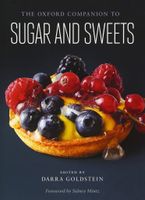Advertisement
Grading and Tasting Syrup
Published 2015
Anyone who wants to sell syrup, whether from the farmstead, to the general store or to major blender/packers, must adhere to state or provincial regulations. The primary regulations seek to ensure that all maple syrup sold is pure (not adulterated) and consistent according to grade. See adulteration. In the United States, grade was usually defined as a combination of appearance by color and density. There have been different names for these grades, but until recently the four grades were Fancy, Medium Amber, Dark Amber, and Grade B. Sitting in a sugar shack, watching the sap evaporate into syrup in the large stainless-steel evaporator, the sugar maker looks for the moment when the density and color are uniform. Density is determined when a small bit of syrup is poured into a hydrometer and measured; the goal is 66 percent or 67 percent Brix (a scale indicating sugar content). See brix. All grades of maple syrup have the same density. As of 2014, all maple syrup produced in the United States and Canada began to use a unified grading system that relies on taste as well as appearance. All maple syrups for consumption are now called Grade A. The four different categories are Golden, Delicate Taste; Amber, Rich Taste; Dark, Robust Taste; and Very Dark, Strong Taste.


